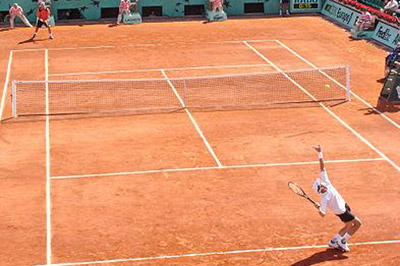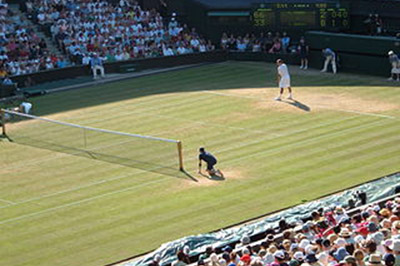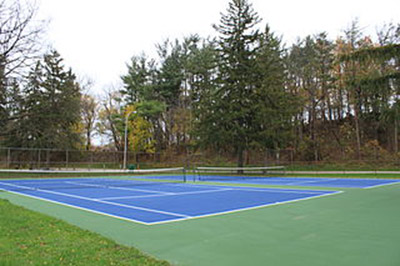Different Court Surfaces

Clay Courts
Common in Europe and Latin America, clay courts come in two different colors (red and green) and are made up of crushed shale, stone or brick. Games on these courses tend to be slower due to rougher composition of materials. The clay causes higher bounces, but it does not absorb water and has poor drainage in the rain.

Grass Courts
Common in Britain, these courts have a soil foundation and different compositions of grasses seeded into the turf. These courts can be dangerous in the rain due to slippery conditions. Tennis balls tend to skid and retain most of their speed, making it the fastest tennis surface.

Hard Courts
Common in the US and Australia, hard courts are made of uniform rigid materials. Typically, these courts use asphalt or concrete as a foundation layer, with a rubber mid-layer and a topcoat made of acrylic paint and sand. Due to the hard surface, players are more prone to injuries on these courts.